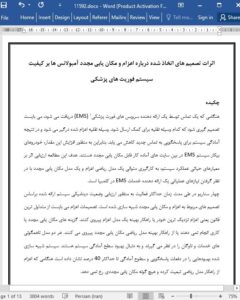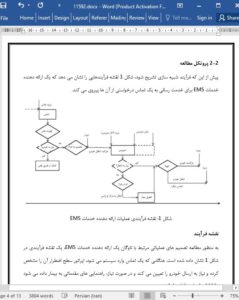Abstract
When a call for a service is received by an Emergency Medical Services (EMS) provider, a decision must be made on which vehicle to send to provide assistance. The dispatched vehicle becomes busy and the system’s preparedness to attend a new call decreases. Therefore, to increase this value, idle EMS vehicles could be relocated among the standby sites. This study aims to evaluate the effect on the critical performance measures of the system, the sequential application of a dispatching mathematical model and a relocation model, taking into account the operational requirements of an EMS provider in Colombia.
Four scenarios were simulated during a period of maximum activity to evaluate the dynamic state of the system given by the dispatch and relocation decisions. Dispatch decisions should follow the most common rule -dispatch the nearest vehicle- or the optimal solution of a dispatching model. Relocation options were either doing nothing and following the optimal solution of a mathematical relocation model. Both models consider the fleet and the services heterogeneous, and look for to improve the system’s preparedness level. The simulated system showed improvements in response times and preparedness levels of up to 54% when the dispatch follows the solution of the mathematical model and no relocation occurs.
1 Introduction
Quality of care is the degree to which health services for individuals and populations increase the likelihood of desired health outcomes, and are consistent with current professional knowledge (Sanders, 2002). Emergency Medical Services (EMS) are part of these services. The dispatch and relocation of the ambulance -when appropriate-, in a given area of coverage are two of the key elements to reduce the waiting time of a potential patient and the initiation a health care service. During the operation of an EMS provider, frequent decisions about which vehicle to send to respond to a service call are taken.











